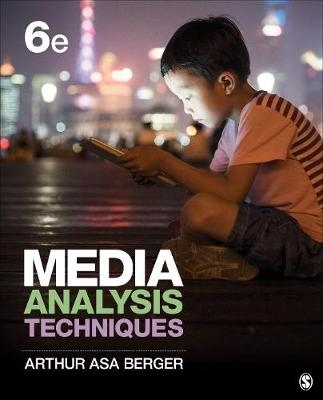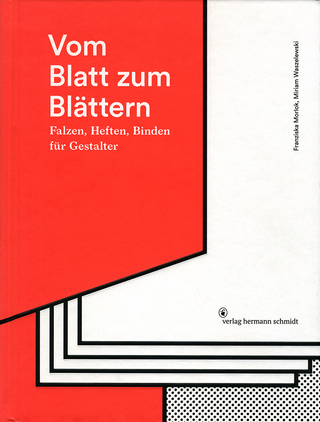
Media Analysis Techniques
SAGE Publications Inc (Verlag)
978-1-5063-6621-0 (ISBN)
"This book provides a concise, thought-provoking, and cleverly-written introduction to major theories in media analysis, and it gives students new perspectives on the media they use."
—Donna Halper, Lesley University
In the Sixth Edition of Media Analysis Techniques, author Arthur Asa Berger once again provides students with a clearly written, user-friendly, hands-on guide to media criticism. The book empowers readers to make their own analyses of the media rather than just accept how others interpret the media. Media Analysis Techniques begins by examining four basic techniques of media interpretation—semiotic theory, Marxist theory, psychoanalytic theory, and sociological theory—that Berger considers critical for creative people to acknowledge if they are to understand how their creations translate to the real world. Application chapters then link popular culture to these four theories. Written in an accessible style that demystifies complex concepts, Media Analysis Techniques includes learning exercises, a glossary, study guides, and the author’s own illustrations.
New to the Sixth Edition:
A new chapter on discourse analysis offers students techniques for analyzing the language in texts.
New content on psychological impact of social media shows that there are often negative consequences to using social media.
Increased coverage of technology and social media helps readers apply time-tested analysis techniques to the latest media.
Updated examples from popular culture bring theory to life.
New drawings and photo images illustrate concepts and enhance the visual attractiveness of this book.
New material around generational differences describe to students how each generation interacts with media differently, particularly the millennials.
New discussions by thinkers who have made major impacts on popular culture, such as
Daniel Chandler on semiotic codes
Michel Foucault on change in cultures
Mark Gottdiener on sign vehicles in semiotic theory
Guy Debord on the Society of Spectacle
Mark Thompson et al on Marx’s neglect of egalitarian political culture
Marcel Danesi on myth and popular culture
Ernest Kris on the Oedipus Complex
Sigmund Freud on the purposes of jokes
Clotaire Rapaille on the new "Global code."
Teun van Dyk on discourse analysis and ideology
Wolfgang Iser on reception theory
Arthur Asa Berger is Professor Emeritus of Broadcast and Electronic Communication Arts at San Francisco State University, where he taught between 1965 and 2003. He has published more than 100 articles, numerous book reviews, and more than 60 books. Among his latest books are the third edition of Media and Communication Research Methods: An Introduction to Qualitative and Quantitative Approaches (2013), The Academic Writer’s Toolkit: A User’s Manual (2008), What Objects Mean: An Introduction to Material Culture (2009), Bali Tourism (2013), Tourism in Japan: An Ethno-Semiotic Analysis (2010), The Culture Theorist’s Book of Quotations (2010), and The Objects of Our Affection: Semiotics and Consumer Culture (2010). He has also written a number of academic mysteries such as Durkheim is Dead: Sherlock Holmes is Introduced to Sociological Theory (2003) and Mistake in Identity: A Cultural Studies Murder Mystery (2005). His books have been translated into eight languages and thirteen of his books have been translated into Chinese.
Preface
Acknowledgments
Part I. Techniques of Interpretation
Chapter 1: Semiotic Analysis
A Brief History of the Subject
The Problem of Meaning
Social Aspects of Semiotics: The Individual and Society
Saussure on the Science of Semiology
Signs
Forms of Signs
Signs and Truth
Facial Expressions as Signs
Hyperreality
Language and Speaking
Connotation and Denotation
The Synchronic and the Diachronic
Syntagmatic Analysis
Paradigmatic Analysis
Intertextuality
Dialogical Theory
Metaphor and Metonymy
Codes
Culture Codes
Michel Foucault on Codes
Semiotics of the Television Medium
Some Criticisms of Semiotic Analysis
A Checklist for Semiotic Analysis of Television
Chapter 2: Marxist Analysis
Materialism
The Base and the Superstructure
False Consciousness
Ideology
The Frankfurt School
Class Conflict
Alienation
The Consumer Society
John Berger on Advertising
Bourgeois Heroes
Hegemony
The Problem of Media Consolidation
The Society of the Spectacle
The Danger of Being Doctrinaire
Grid-Group Analysis
Marxist Criticism in the Postmodern World
Analyzing a Text From a Marxist Perspective
Study Questions and Topics for Discussion
Annotated Bibliography
Chapter 3: Psychoanalytic Criticism
The Unconscious
Sexuality
William A. Rossi on Sexual Aspects of the Foot and Shoe
The Oedipus Complex
On the Importance of Myth
Media and the Oedipus Complex
Id, Ego, and Superego
The Structural Hypothesis Applied to Culture
Symbols
Defense Mechanisms
Martin Grotjahn on Horror Films
Dreams
Condensation and Displacement
Aggression and Guilt
Stereotypes and Aggressive Humor
Freud and Beyond
Jungian Psychoanalytic Theory
Psychoanalytic Analysis of Media: A Cautionary Note
Chapter 4: Sociological Analysis
Émile Durkheim on Our Social Nature
Some Basic Concepts
Culture
Herbert Gans and Taste Cultures
Uses and Gratifications
Genres and Formulas
Content Analysis
Chapter 5: Discourse Analysis
Defining Discourse Analysis
Teun A. Van Dijk on Discourse Analysis
Spoken and Written Discourse
Styles and Written Discourse
Political Ideologies and Discourse Analysis
Critical Discourse Analysis (CDA)
Advertising and Critical Discourse Analysis
Multimodal Discourse Analysis (MDA)
Multimodal Critical Discourse Analysis (MCDA)
A Multimodal Critical Discourse Analysis of an Advertisement
Conclusion
Part II. Applications
Chapter 6: Murderers on the Orient Express
Organizing a Mystery
Detectives as Semioticians
Social and Political Dimensions
Poirot as Revolutionary
Chapter 7: Seven Points on the Game of Football (And Some Interesting Statistics)
Football Is a Game of Signs
Instant Replay and the Modern Sensibility
Football Socializes Us
Statistics on Televised Football
Why Baseball Is Boring
Football as an Alternative to Religion
The Marxist Perspective
Football and the Psyche
Concluding Remarks
Chapter 8: The Maiden with the Snake: Interpretations of a Print Advertisement
Signs in Signs: A Primer on Applied Semiotics
The Maiden in Paradise: A Case Study
A Paradigmatic Analysis of the Fidji Advertisement
Using the Myth Model
Psychoanalytic Aspects of the Fidji Text
An Aside on Moisturizers and Anxiety
Final Comments on Perfume and Anxiety
Chapter 9: All-News Radio and the American Bourgeoisie
News and Alienation
News and Ruling-Class Ideology
Commercials and Anxiety
Caught in the Middle
News and Conversation
News from the Internet and Social Media
Chapter 10: Video Games: A New Art Form
An Investigation of MMO’s
Are Video Games an Art Form or a Medium?
New Technologies and Video Games
Janet Murray on Interactivity and Immersion
Video Games and Addiction
Video Games and the Problem of Violence
Social and Physical Problems Caused by Video Games
Video Games and Sexuality
Conclusions
Chapter 11: Cell Phones, Social Media, and the Problem of Identity
An Epiphany
The Internet
Media Use by 8- to 18-Year-Olds
Social Media
A Psychoanalytic Perspective on Youth and Social Media
The Cell Phone as Sign: A Semiotic Perspective
Marxist Perspectives on Cell Phones
Conclusions
Epilogue: Shmoos and Analysis
Appendix: Simulations, Activities, Games, and Exercises
Glossary
References
Author Index
Subject Index
About the Author
| Erscheinungsdatum | 31.01.2018 |
|---|---|
| Verlagsort | Thousand Oaks |
| Sprache | englisch |
| Maße | 187 x 231 mm |
| Gewicht | 560 g |
| Themenwelt | Sozialwissenschaften ► Kommunikation / Medien ► Allgemeines / Lexika |
| Sozialwissenschaften ► Kommunikation / Medien ► Kommunikationswissenschaft | |
| ISBN-10 | 1-5063-6621-X / 150636621X |
| ISBN-13 | 978-1-5063-6621-0 / 9781506366210 |
| Zustand | Neuware |
| Haben Sie eine Frage zum Produkt? |
aus dem Bereich


